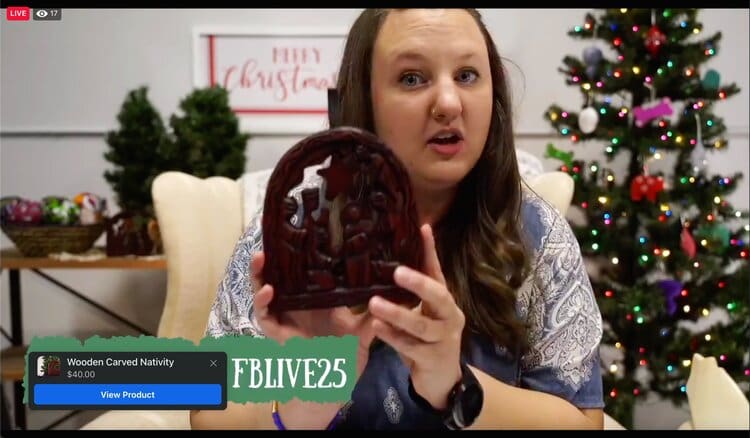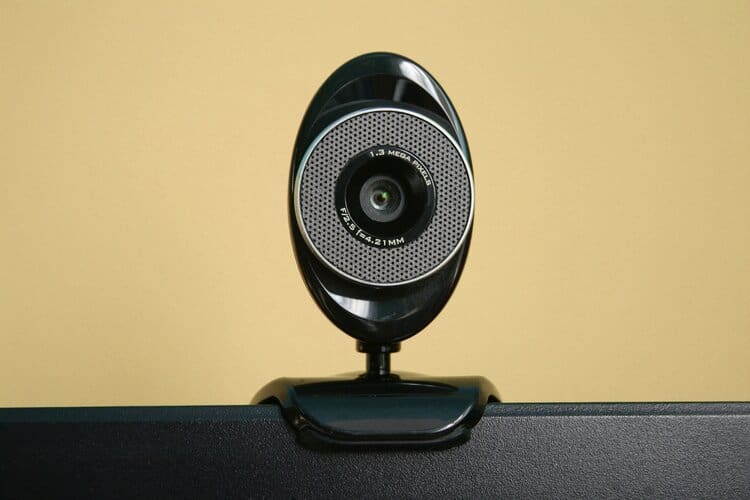So, you have decided that you want to do a livestream event, but you aren’t sure where to start? No problem! Today, I am going to teach you the first 5 steps you need to take to make sure your event is a success.
1) Know WHY You Want to Livestream
This sounds oversimplified, but it is by far the most important thing you can do. Knowing WHY you are trying to engage your audience live will help you in preparing and keeping you on task during your stream.

Let me give you an example of what I mean. We recently helped a small boutique (HopeWorks Boutique) livestream an event for Christmas.
They wanted to showcase new products and gain more orders before the end of the Christmas shipping window. The problem is wanting to sell more is not a WHY it is a WHAT.
This particular boutique collects hand crafted items from artisans in Kenya. They ensure that all their artisans are paid a livable wage and even have a job creation program that empowers women to pursue careers and help break the cycles of poverty in their remote villages.
If the WHAT for the company is to sell more before Christmas, the WHY is to help continue their mission of empowerment and financial well-being for their artisans.
For HopeWorks, they accomplished their ‘what’ by showcasing their new or limited time products while also talking about their mission as a whole and highlighting specific artisans. They shared stories, photos, and videos to help engage their audience with their WHY.
Even if you are not making sales, your WHY is still the most important thing. The WHAT may catch someone’s attention, but the WHY will keep them engaged and help encourage long-term engagement.
Your entire livestream should be planned around the WHY.
If you are struggling to nail down your WHY, we strongly recommend you check out this TED Talk, all about finding your WHY.
2) Make a Plan For Your Production
Once you know your WHY, the next thing you need to do is write out a plan. Don’t just think about it, actually write it down (physically or digitally). This is often referred to as the Run-of-Show, but all you need is an outline of the topics and order you are going to discuss.
Write more details than you think you will need.
Don’t just write something like this:
- Say Hello
- Talk about “Product 1”
- Subscribe
- Talk about “Product 2”
- Goodbye
Instead do something like this:
- Introduce yourself
- Name
- Business
- Website
- Remind people to comment and ask questions
- Talk about “Product 1”
- How it’s made
- Uses
- Price
- Remind people to subscribe
- Give all social media handles
- Remind to like and share too
- Talk about “Product 2”
- How it’s made
- Uses
- Price
- Thank everyone for joining
- Remind to like and subscribe
- Remind them of website
- Thanks and goodbye
Because both of these outlines contain the same information you may think that you would prefer to use the first one because it is shorter, but I would strongly recommend against that. The problem is, unless you are used to being on camera, you will likely forget everything you wanted to say once you go live. Having a plan will help keep you on track and will help you not ramble (rambling will make people tune out).
Figuring out the plan will also give you an idea of how much time your livestream will be. If you have a set amount of time in mind, you may need to adjust your plan to fit into the timeframe.
Here is another important note about your plan. Don’t write out a word-for-word speech. If you are worried about forgetting what you want to say, write out more notes or a bulleted list of talking points. If you write out word for word, you will end up reading off a piece of paper the whole time. You need to be able to look into the camera to engage your audience. When you look into the camera while you speak, people feel like you are talking directly to them. Eye contact is incredibly important in a livestream.
3) Clean your Webcam

If this is your first time streaming, here is a huge take-away…
Your webcam is disgusting.
Don’t worry though, it’s not your fault. Laptop webcams rest on the case where you always put your hands while typing. That means all the oils and dirt from your hands can get on your webcam. It doesn’t always happen, but it is always your best bet to clean off the webcam before streaming.
Use an alcohol wipe made for glass or a micro-fiber cloth so that you don’t risk scratching the lens. Don’t use a paper towel!
If you are using an external webcam or camera, you should still clean off the lens to make sure there are no light streaks or fuzziness in your video.
4) Test Your Livestream Setup and Production
I’ll say it again for those of you in back – DO A TEST!
No matter what service you plan to stream to (Facebook, YouTube, Vimeo, etc.) there is a way to do a test. Some may call them private streams, some refer to them as a “Test Broadcast”, but regardless, there is a way to test.
It is vitally important that you test. I cannot tell you the number of times we have done a test stream and discovered a new problem we haven’t encountered before. These tests will help you become familiar with the process of going live and uncover any idiosyncrasies you need to know about ahead of your stream.
When you test, here are some things you should be on the lookout for to make your stream awesome!
- Check your background
- Make sure you are not sitting in front of a blank wall. You want to have some life behind you – plants, paintings/photos, bookshelf, etc. Make sure that it is interesting but not distracting. You want the focus to be on you, but you also want your background to look nice.
- Don’t have a large light source behind you like a window. You want to make sure that there is light on your face and nothing too bright behind you. If you have a large light behind you, it can cause you to be cast in shadows and hard to see.
- Check your audio
- Audio is the most important thing when it comes to live stream (or any video really). When you do your test, make sure you listen to the audio. If you sound “echoey” then you may need to move to a different location. If the audio sounds “crackly”, “robotic”, or otherwise bad, then it may be the mic that you are using. If you don’t have access to a high-quality external mic, try a pair of headphones with a built-in mic (Apple headphones work great).
- If you switch to a new mic, be sure to test that mic also!
- Check your connection
- When you test, make sure to verify that your internet is fast enough to support your stream. Your test will show you whether your internet can hack it. If the playback is glitching or freezing, or if the whole thing is pixelated/low quality, then you may not have fast enough internet for a successful stream. If that is the case, you will want to find another location with faster internet (or look into upgrading).
- You can test your internet speed at www.speedtest.net. A good rule of thumb is you want your upload speed to be 6mbps to stream in 720p and you want it to be 10mbps to stream in 1080p.
5) Ask Friends and Family to Watch Your Livestream
Unless you have an established audience with regular engagement, your livestream will probably be sparsely attended. That doesn’t mean you should avoid going live. Instead, reach out to your close friends and family beforehand and ask them to watch along as you stream. Ask them to like and comment and ask questions. This will create an active audience. When a new person joins your stream, they will be more likely to stay and engage if they see others. People have a fear of being called out if there are very few people watching and are more likely to leave.
Also, seeing comments and questions pop up will encourage new people to join in the conversation. The more engagement you have on your livestream, the more popular it will be even when it turns into video on demand after the stream is over.
Bonus – Don’t Forget to Promote Your Show
One last thing – don’t forget to tell your audience when and where you will be live! You should start promoting your livestream at least one week before the actual event. Talk about it on Facebook, Instagram, TikTok, wherever your audience is. Be sure to encourage your fans to join so they know it is coming.
Thanks for Reading!
Thanks for reading our Livestream 101 article! If you have any questions or want to go even further with your livestream, reach out to us HERE. Also, be sure to let us know if this information helps you make a successful stream! We love to hear from you!
